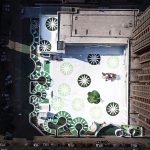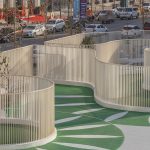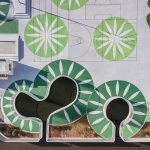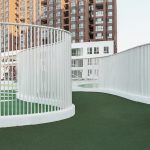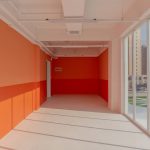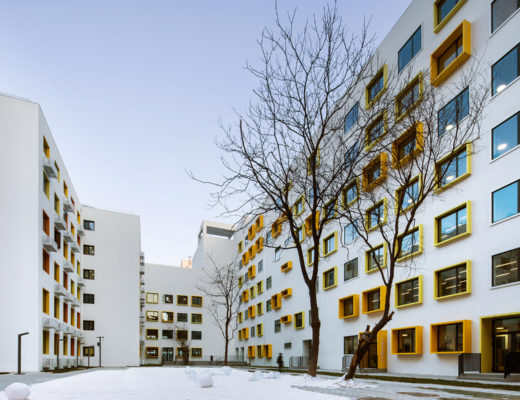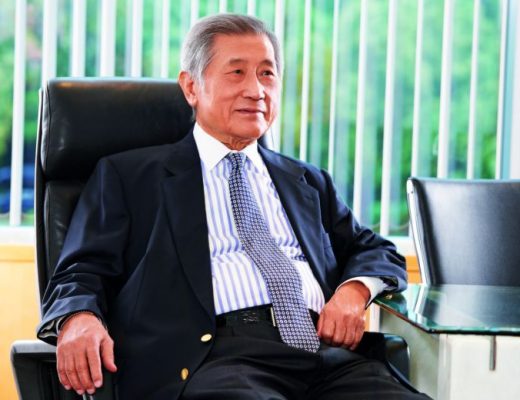unarchitecte was given a brief to transform an unfinished office building in Lingbao City, a county-level city in China’s Henan Province, into a kindergarten. It is the first of its kind project by a well-known Chinese preschool education institution to open a branch in a county-level city, leading to low capital investment.
“Under such conditions and circumstances, we still hoped to build a small white world different from the whole community, a clean and real space where children can concentrate on playing and cognition, exploring and thinking, so as to obtain true feelings and happiness.” – Hetian Zhang, architect-in-charge
Removing the decorations and all the extra vertical lines on the L-shaped corridor, getting rid of the original shape, Zhang and his team cleaned the external facade of the original building as much as possible to make the building simple and versatile. With five sets of slides leaning out of the facade, the outdoor space of each floor is connected, with undulating activity paths.
Pitching in from the outside to the inside, walls with high saturation colours were used which established the stereoscopic sense of the deep white space, but also guided the transformation order of the different functions of the space. The architects also eliminated the boundary between the internal building and the external space, with two parts ultimately extended and integrated with each other.
At this point, even though the entire site spanning 11,235m² and community had been clearly defined, but the site was separated from the community, like floating above the skin of the later one. The architects wanted to change it. “Our vision is an urban space where children and the community learn from each other. And the fence at the edge of the site became the interrelated critical surface,” says Zhang.
You might also like:
Colourful kindergarten in Vietnam encourages safe exploration and nature-based learning
Sanjay Puri Architects designs energy-efficient school in India to counter harsh desert climate
Abu Dhabi school by Segond-Guyon takes horizontal approach amid high-rise towers
Accordingly, we gave up many large and small plots around the site and returned it to the community as its public space; and this made the walls thick to form a middle zone between the development centre and the outer city. In the spaces outside provided by the roundabout fence walls, the community furnished it with seating benches and sports equipment, as well as trees. Hence people can get closer to the internal playground and be surrounded by the activities of the children. Doing so has increased the interaction between the children and the grown-ups providing opportunities to learn from them such as chess, and even observe the small crafts and business practices of vendors who occasionally set up stalls outside.
The curved fence also influenced the design of the interior activity spaces. In this way, layer by layer, a multi-dimensional space was set up that integrated the various zones such as the outer city, middle zone, various types of internal spaces, the outdoor platforms between the building and the playground, outer porch, the front hall of each outdoor activity venue to the various indoor activities and functional spaces. The architects’ aim was to create a development centre which creates a new form of park, organically embedded into the community, and injecting it with vitality.
Over the course of time, the kindergarten has become an important landmark for the community. Residents bring their children to play here, leading to residential housing prices in surrounding communities to increase by 10 per cent in a short span.
See the full image gallery here:
Photos: Commune One










